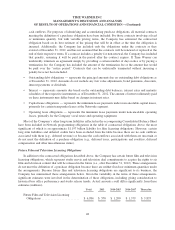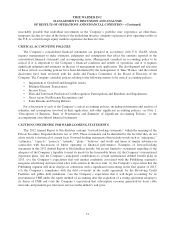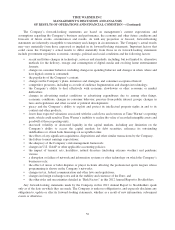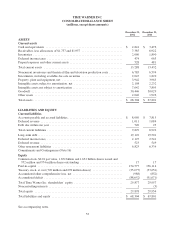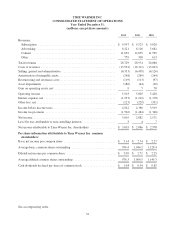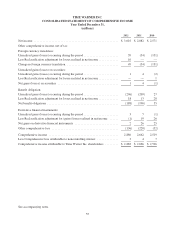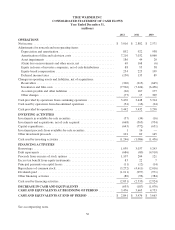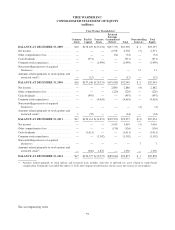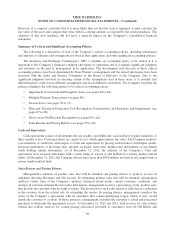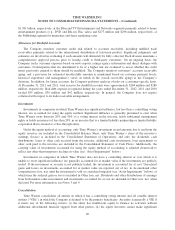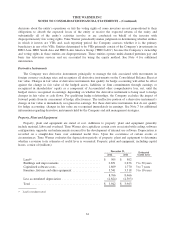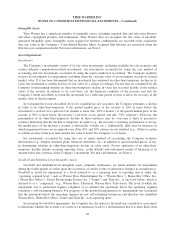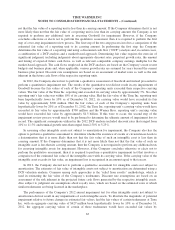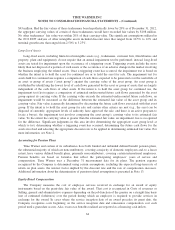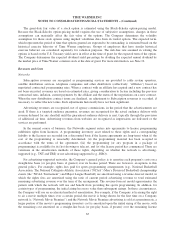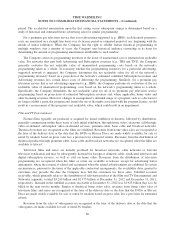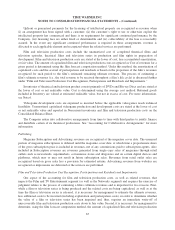Time Magazine 2012 Annual Report Download - page 74
Download and view the complete annual report
Please find page 74 of the 2012 Time Magazine annual report below. You can navigate through the pages in the report by either clicking on the pages listed below, or by using the keyword search tool below to find specific information within the annual report.TIME WARNER INC.
NOTES TO CONSOLIDATED FINANCIAL STATEMENTS
1. DESCRIPTION OF BUSINESS, BASIS OF PRESENTATION AND SUMMARY OF SIGNIFICANT
ACCOUNTING POLICIES
Description of Business
Time Warner Inc. (“Time Warner” or the “Company”) is a leading media and entertainment company, whose
businesses include television networks, film and TV entertainment and publishing. Time Warner classifies its
operations into three reportable segments: Networks: consisting principally of cable television networks,
premium pay and basic tier television services and digital media properties; Film and TV Entertainment:
consisting principally of feature film, television, home video and videogame production and distribution; and
Publishing: consisting principally of magazine publishing and related websites as well as book publishing and
marketing businesses. Financial information for Time Warner’s various reportable segments is presented in
Note 15.
Basis of Presentation
Basis of Consolidation
The consolidated financial statements include all of the assets, liabilities, revenues, expenses and cash flows
of entities in which Time Warner has a controlling interest (“subsidiaries”). Intercompany accounts and
transactions between consolidated companies have been eliminated in consolidation.
The financial position and operating results of most of the Company’s foreign operations are consolidated
using the local currency as the functional currency. Local currency assets and liabilities are translated at the rates
of exchange on the balance sheet date, and local currency revenues and expenses are translated at average rates of
exchange during the period. Translation gains or losses on assets and liabilities are included as a component of
Accumulated other comprehensive loss, net.
Reclassifications
Certain reclassifications have been made to the prior year financial information to conform to the
December 31, 2012 presentation.
Use of Estimates
The preparation of financial statements in conformity with U.S. generally accepted accounting principles
(“GAAP”) requires management to make estimates, judgments and assumptions that affect the amounts reported
in the consolidated financial statements and footnotes thereto. Actual results could differ from those estimates.
Significant estimates and judgments inherent in the preparation of the consolidated financial statements
include accounting for asset impairments, multiple-element transactions, allowances for doubtful accounts,
depreciation and amortization, the determination of ultimate revenues as it relates to amortization of capitalized
film and programming costs and participations and residuals, home video and videogames product and magazine
returns, business combinations, pension and other postretirement benefits, equity-based compensation, income
taxes, contingencies, litigation matters, reporting revenue for certain transactions on a gross versus net basis, and
the determination of whether the Company is the primary beneficiary of entities in which it holds variable
interests.
Accounting Guidance Adopted in 2012
Testing Indefinite-Lived Intangible Assets for Impairment
In the third quarter of 2012, the Company early adopted guidance that provides companies the option to first
perform a qualitative assessment to determine whether it is more likely than not that an indefinite-lived
intangible asset is impaired. If a company concludes that it is more likely than not that the fair value of such an
asset exceeds its carrying amount, the company is not required to perform any additional tests for impairment.
58


